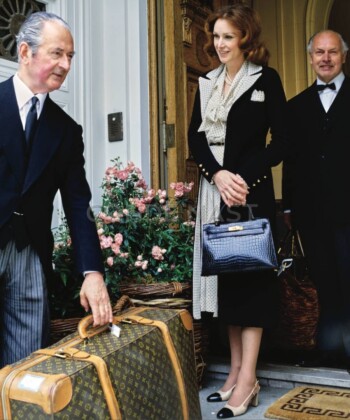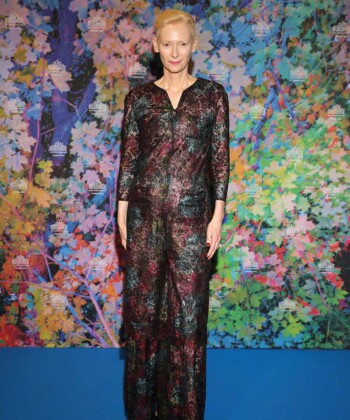
Teenage Tamar, third from right
Among the women who passed in and out of Hodel’s clinic was Elizabeth Short, a brunette from Massachusetts. Short possessed an arrest record for underage drinking, a habit of talking to men in hotel bars and the usual naive dreams that brought pretty girls with Depression-era childhoods to Los Angeles.
During the last six months of 1946, Short lived in five different apartments in Hollywood. She was vulnerable. Eight people, including one who would later become a police detective, asserted that they knew, firsthand, that Hodel had some kind of relationship with Short. The last time friends saw her was on the evening of January 9, in the Biltmore Hotel.
On the morning of January 15, the severely mutilated body of a young woman was found in L.A.’s Leimert Park. The woman who first sighted the body thought it was a mannequin—it had been bisected expertly at the waist; there were signs of torture. The presentation of the corpse indicated that the murder occurred at another location; she was moved to the field to be viewed. These were the remains of Elizabeth Short.
Some who’ve studied the crime see clues in certain photos and paintings. The art historians Nelson and Bayliss note (and photographs show) how strikingly Short’s posed upper body resembled one of Man Ray’s photos of his wife, Juliet. The body’s pronounced bisection (the top half was placed a foot away from the bottom) could be seen as a nod to a Man Ray painting, Le Beau Temps. In addition, a man calling himself “The Black Dahlia Avenger” wrote letters to the LAPD and newspapers claiming responsibility, in one letter drawing a picture of a face in a stocking mask, like one of Ray’s of Juliet. Most stunningly, L.A. artist William Copley did a painting in 1961, showing a doctor with torture-inflicting tools and a dead nude woman on the floor. A hard-to-escape conclusion: The Surrealists were winking at the murder of the Black Dahlia.
Hundreds of police officers investigated Short’s death; more than 50 people “confessed” but were cleared. During the months and then years of fruitless investigation, Tamar’s young life was unraveling on Franklin Avenue. She worshipped her father and she feared him. “The pharaohs had sex with their daughters,” he’d rave. She fled to her mother, who made her feel as if she, not Hodel, was the “bad one.” She returned and became pregnant by Hodel after he raped her in the summer of 1949, and she had an abortion. Afterward, her father, jealous of boys she knew in school, “hit me with a gun and screamed and yelled and went insane.” Her stepmother, Dorero, urged her to “ ‘run away right now,’ ” Tamar said. “She told me my father had committed a murder [of his secretary].” Tamar went into hiding with a friend’s family. When the police tracked her down, “the officers said, ‘We know all about your father.’ ”

The LAPD’s original case-evidence file, including Elizabeth Short’s address book
But on December 23, 1949, despite two eyewitnesses who testified that they’d seen Hodel forcing sex on Tamar, he was acquitted. (It was later found that other witnesses were given payoffs of $10,000 to $15,000 to commit perjury.) Tamar—publicly branded a slut and a liar at 14—was remanded to a juvenile detention home.
The trial set something else in motion: The LAPD was now hot on Hodel’s trail for the Black Dahlia murder. When lawyer Neeb made his bombshell accusation, he had no idea that his client ever knew Elizabeth Short. Nor did he realize that George Hodel was an early suspect, because of a drunken, guilty-sounding muttering of Hodel’s at a nightclub (reported to the district attorney, though the lead went nowhere). Now detectives planted recording devices inside the walls of the Franklin house, and 18 officers listened in around the clock. They heard Hodel tell a friend, “Supposin’ I did kill the Black Dahlia? They can’t prove it now, because my secretary is dead,” and remark that his plan was “Never confess.”
If the police planned to arrest Hodel, it never happened. In March 1950, Hodel fled Los Angeles, settling in the Philippines and marrying an aristocratic Filipino. After they divorced, he took yet another wife in San Francisco, lived in a penthouse and died at age 91 in 1999.
Hodel managed to elude arrest for any crime. The police tapes containing his conversations about Short and Spaulding were “lost.” But they were not gone.

Tamar’s baby Fauna
For much of her life Tamar Hodel struggled to recover from abuse and condemnation. Released from juvenile detention to her mother’s house, she got pregnant again after a boy in the neighborhood raped her. Tamar had the baby girl at a hospital in San Francisco. Even though the infant’s father was white, she told her family and hospital staff he was black because “I was shocked by the way whites treated blacks in the juvenile hall. I was embarrassed to be white.” Her heroes were Marian Anderson, Langston Hughes, Paul Robeson and Josh White. She watched a nun take the baby, at her parents’ orders.
George Hodel was never not in control of Tamar’s life. He named the baby Fauna, for another incest-tinged poem by Jeffers. But he didn’t want her raised by the Hodels. He ordered Tamar’s mother to drive to Reno to find a black woman willing to be given a baby under his terms: She would not be officially adopted and she must keep her name, Fauna Hodel. A ladies’ room attendant at a casino, a woman named Jimmie Lee, agreed. When, at the hospital, Jimmie Lee balked—this baby was white!—Hodel assured her, “One day she’ll darken.”
NEXT: “Steve, the paramedics are here. They just pronounced your father dead.”










































